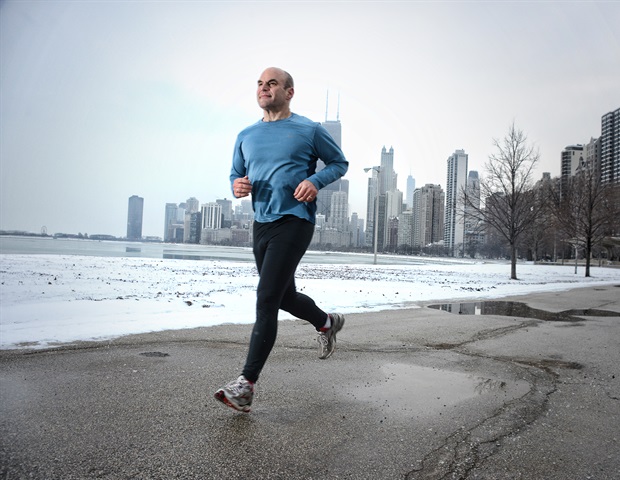A prolonged sedentary time in childhood can increase cholesterol levels by two-thirds in adulthood, leading to heart problems and even premature death. However, a new study has found that light physical activity can completely reverse these risks and is significantly more effective than moderate to vigorous physical activity.
The study was conducted in collaboration between the University of Exeter, the University of Eastern Finland, and the University of Bristol, and was published in the Journal of Clinical Endocrinology & Metabolism. The researchers used data from the „Children of the 90s“ study at the University of Bristol (also known as the Avon Longitudinal Study of Parents and Children), which involved 792 children aged 11, followed up until the age of 24.
The results of this study revealed that accumulated sedentary time since childhood can increase cholesterol levels by two-thirds (67%) by the mid-twenties. Elevated cholesterol levels and dyslipidemia in childhood and adolescence are associated with premature death in the mid-forties and heart problems such as subclinical atherosclerosis and heart damage in the mid-twenties.
A healthy lifestyle is considered important for preventing dyslipidemia, and one of the key ways to lower cholesterol levels is through physical activity. This study, for the first time, objectively examined the long-term effects of sedentary time, light physical activity, and moderate to vigorous physical activity on cholesterol levels in childhood.
The World Health Organization currently recommends that children and adolescents engage in an average of 60 minutes of moderate to vigorous physical activity per day and should reduce their sedentary time. However, this new study and other recent studies have found that light physical activity – including activities such as extended walks, household chores, or slow dancing, swimming, or cycling – can be up to five times more effective than moderate to vigorous physical activity in promoting healthy hearts and reducing inflammation in the young population.
Dr. Andrew Agbaje, from the University of Exeter, led the study and stated, „These findings highlight the incredible health importance of light physical activity and show that it could be the key to preventing elevated cholesterol levels and dyslipidemia in early life. We have evidence that light physical activity is significantly more effective than moderate to vigorous physical activity in this regard, and therefore, it may be time for the World Health Organization to update their physical activity guidelines for childhood – and encourage public health experts, pediatricians, and health policymakers to encourage greater participation in light physical activity during childhood.“
Accelerometer measurements of sedentary time, light physical activity, and moderate to vigorous physical activity were collected at ages 11, 15, and 24. High-density lipoprotein cholesterol, low-density lipoprotein cholesterol, triglycerides, and total cholesterol were repeated measurements at ages 15, 17, and 24. Measurements of dual-energy X-ray absorptiometry were also conducted in these children to assess total body fat mass and muscle mass, as well as fasting blood glucose, insulin, and high-sensitivity C-reactive protein, with the consideration of smoking status, socioeconomic status, and family history of cardiovascular disease.
During the 13-year follow-up period, sedentary time increased from approximately six hours per day to nine hours per day. Light physical activity decreased from six hours per day to three hours per day, while moderate to vigorous physical activity remained relatively stable at about 50 minutes per day from childhood to young adulthood. The average increase in total cholesterol was 0.69 mmol/l and was observed to be independent of body fat.
An average of four and a half hours of light physical activity per day from childhood to young adulthood led to a causative decrease in total cholesterol (-0.53 mmol/l), although body fat mass may reduce the effect of light physical activity on total cholesterol by up to six percent. Approximately 50 minutes of moderate to vigorous physical activity per day since childhood was also associated with a slight decrease in total cholesterol (-0.05 mmol/l), but total body fat mass reduced the effect of moderate to vigorous physical activity on total cholesterol by up to 48 percent. Importantly, the increase in fat mass nullified the small effect of moderate to vigorous physical activity on total cholesterol levels.
The work is titled „Associations between sedentary time and physical activity since childhood with lipids: a 13-year mediation and time study“ and published in the Journal of Clinical Endocrinology & Metabolism. These results come shortly after another study led by Dr. Andrew Agbaje was published this week in Nature Communications, which found that light physical activity can completely reverse obesity in children associated with prolonged sedentary time. Sedentary time contributed seven to ten percent to the total fat mass that increased from childhood to young adulthood. Light physical activity reduced the overall increase in fat mass by 9.5-15 percent, while moderate to vigorous physical activity reduced fat mass by 0.7-1.7 percent.
Our investigations suggest that light physical activity could be an unsung hero, and it is time for the world to replace the mantra of „average 60 minutes of moderate to vigorous physical activity per day“ with „at least 3 hours of light physical activity per day.“ Light physical activity appears to be the antidote to the catastrophic effects of sedentary time on the young population.
Dr. Andrew Agbaje, University of Exeter
Dr. Andrew Agbaje’s research group (urFIT-Kind) is supported by research fellowships from the Jenny and Antti Wihuri Foundation, the Central Fund of the Finnish Cultural Foundation, the North Savo Regional Fund of the Finnish Cultural Foundation, the Orion Research Foundation, the Aarne Koskelo Foundation, the Antti and Tyyne Soininen Foundation, the Paulo Foundation, the Yrjö Jahnsson Foundation, the Paavo Nurmi Foundation, the Finnish Foundation for Cardiovascular Research, the Ida Montin Foundation, the Foundation for Pediatric Research, and the Alfred Kordelin Foundation.
Reference:
Journal reference:
Agbaje, AO, (2023) Associations between sedentary time and physical activity since childhood with lipids: a 13-year mediation and time study. The Journal of Clinical Endocrinology & Metabolism. doi.org/10.1210/clinem/dgad688.


